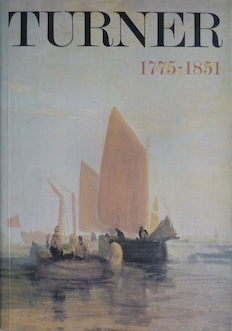|
19 XI 2024 |
4. Success at the Royal Academy 1801-12
088 - Snow Storm- Hannibal and his Army crossing the Alps | |

| ||
|
Turner’s verses in the 1812 catalogue are described for the first time as coming from his 'MS. P[oem?] Fallacies of Hope', the source of most of his later quotations though almost certainly never a complete entity; Turner was content, as so often in his choice of subjects, to evoke the sonorous appeal of some epic event rather than bother himself with slavish accuracy of documentation. Craft, treachery, and fraud - Salassian force, Hung on the fainting rear ! then Plunder seiz’d The victor and the captive, - Saguntum's spoil, Alike became their prey; still the chief advanc’d, Look'd on the sun with hope; - low, broad, and wan; While the fierce archer of the downward year Stains Italy's blanch'd barrier with storms. In vain each pass, ensanguin'd deep with dead, Or rocky fragments, wide destruction roll'd. Still on Campania's fertile plains - he thought, But the loud breeze sob'd, 'Capua's joys beware!' Hannibal's crossing of the Alps in 218 B.C. was a common source of Romantic and proto-Romantic inspiration. Mrs Radcliffe's The Mysteries of Udolpho, 1794, describes the scene shown by Turner, who was also inspired by the lost oil painting by J. R. Cozens, which passed through the salerooms in 1802. This painting, however, showed the later, more hopeful moment when Hannibal showed his troops the fertile plains of Italy. Here Turner not only shows the hazards of the crossing but hinted at the enervating effect of Italian luxury: ‘Capua's joys beware!’ The history of Carthage was to become a preoccupation of Turner's (see Nos.165 and 528). In this case John Gage has suggested that Turner saw a parallel between the struggle of Rome and Carthage and that between England and Napoleonic France (see exhibition catalogue, La Peinture Romantique Anglaise et les Préraphaelites, Petit Palais, Paris, 1972 No.262). On his visit to Paris in 1802 Turner had visited David's studio and seen his picture of Napoleon on the St. Bernard Pass in which Napoleon was shown as the modern Hannibal. However, another source of inspiration for this picture was a storm seen at his patron Walter Fawkes' house, Farnley Hall in Yorkshire, in 1810. According to Fawkes’ son Turner even foresaw the use he would make of his sketch: “'There," said he, "Hawkey; in two years you will see this again, and call it Hannibal crossing the Alps.”' There is a sketch for the foreground figures in the 'Calais Pier' sketchbook (T.B.LXXXI-38, 39) which suggests that Turner was thinking of the subject at least eight or so years earlier. Farington, who was on the Hanging Committee of the Royal Academy in 1812, records Turner's concern over the hanging of this picture. It was first placed over a door in the Great Room and 'was thought was seen to great advantage'. But Turner objected and said that ‘if this picture were not placed under the line He wd. rather have it back'. This was tried but it appeared to the greatest disadvantage' and was put back where it had been before. Turner persisted in his objection to its being hung high up and it was finally hung ‘at the head of the new room'. After a second visit to make sure how it looked by daylight Turner finally 'approved of the situation of His large picture provided other members shd. have pictures near it'. Turner's insistence that the picture should be hung low reveals his understanding of the novel effect of his vortex-like composition, which draws the spectator into its swirling depths. Here for the first time Turner's composition is based on an overriding circular force instead of the opposition of rectilinear, diagonal forces as in 'The Fall of an Avalanche'. The picture was well received by the critics. For the Examiner, 7 June 1812, ‘This is a performance that classes Mr. Turner in the highest rank of landscape painters, for it possesses a considerable portion of that main excellence of the sister Arts, Invention. ... This picture delights the imagination by the impressive agency of a few uncommon and sublime subjects in material nature, and of terror in its display of the effects of moral evil.' The main body of the army is 'represented agreeably to that principle of the sublime which arises from obscurity' but ‘An aspect of terrible splendour is displayed in the shining of the sun ... A terrible magnificence is also seen in the widely circular sweep of snow whirling high in the air ... In fine, the moral and physical elements are here in powerful unison blended by a most masterly hand, awakening emotions of awe and grandeur'. The critic of the Repository of Arts, Literature, Commerce for 12 June was 'almost led to describe it as the effect of magic, which this Prospero of the graphic arts can call into action, and give to airy nothing a substantial form . . . All that is terrible and grand is personified in the mysterious effect of the picture; and we cannot but admire the genius displayed in this extraordinary work'. According to the St. James Chronicle for 23-26 May the 'sun is painted with peculiar felicity, and the warm tinting from the great source of light struggling through the blackness of the storm, gives a fine relief to the subject, which is still further improved by the introduction of a corner of cloudless sky on the left'. This work is also available as a Polaroid. An image generated by an AI Machine Learning Model Property of the artist. | ||
